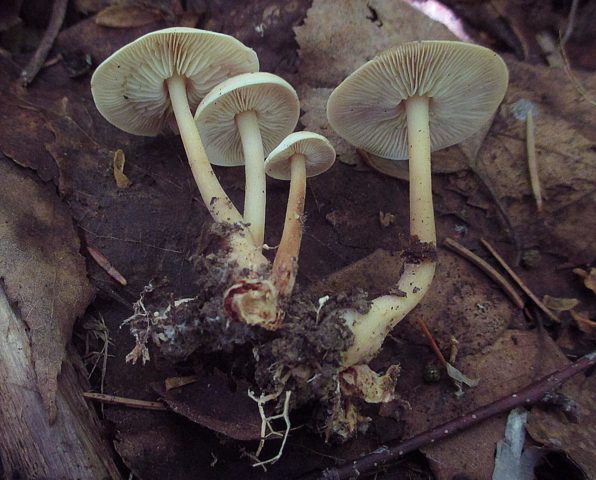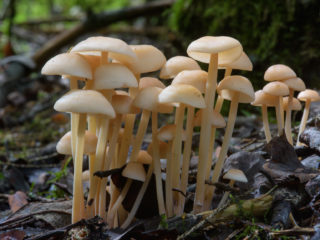Content
The Negniuchnikov family includes more than 50 species of mushrooms, most of which are suitable for consumption, but there are representatives that cause poisoning. Water-loving collibia is a conditionally edible saprophyte, characterized by a sweetish taste and lack of odor. Appears in May, stops growing with the onset of frost.
What does water-loving collibia look like?
Water-loving collibia is the only representative of the species in which it is difficult to determine the clear color of the fruiting body.In the dry season the shade is light beige with an ocher tint in the middle. It can be plain cream. If the season is rainy or the place is constantly wet, the water-loving gymnopus is light or dark brown in color.
Description of the cap
Water-loving collibia is a small mushroom whose cap diameter rarely exceeds 5 cm.
External characteristics:
- in young specimens the shape of the cap is rounded, sloping, and as the mushroom matures it becomes more open (to the point of prostrate);
- the edges are drooping, uneven, transparent, the plates are visually visible;
- the surface is slightly lumpy, hygrophanic, transparent, not slippery, but not dry;
- the color is never uniform, the central part may be darker or lighter than the outer part;
- two types of plates: short, reaching to the middle; long, rarely protruding caps;
- the plates are beige or with a yellow tint, sparsely located, firmly attached to the fruiting body;
- spores are white or cream-colored;
- the flesh is fragile, slightly sweet, beige or white, odorless.
Description of the leg
The leg of the water-loving gymnopus reaches 4-8 cm in length and about 1.5 cm in width. The color is light on top, a shade darker below. The shade is no different from the color of the cap.
The stem is hollow, formed in the form of a cylinder, narrow near the cap and widening towards the base.
The structure of the stem is hard, fibrous, lined.
Is the mushroom edible or not?
The nutritional value of water-loving collibia is low; it is classified as a conditionally edible group. Half-raw collibium can cause intestinal upset and nausea.Intoxication is short-term and insignificant. There is no significant harm from collibia.
Where and how does it grow
Collibia is found from the European part to the South. The main accumulation is observed in the Central and Northwestern regions, in the Urals and Eastern Siberia, in the Moscow region. Grows in coniferous and mixed forests on a moss or rotten leaf cushion, on the remains of trees: branches, bark, stumps. It is found in open wetlands and along the banks of small bodies of water. Forms extensive colonies. The main requirement for growth is a moist environment.
Doubles and their differences
Externally, the water-loving gymnopus is similar to the wood-loving collibium (Gymnopus dryophilus).
Without a detailed examination, the fruiting bodies are absolutely identical. The double is not dark brown. The leg at the cut site breaks down into ribbons. The surface of the cap is dry. There is no widening at the base of the leg; it is the same width along its entire length. The nutritional value of the species is the same.
Sulfur-yellow false fungus belongs to a different family, but the mushrooms are very similar in appearance. The double is toxic and can cause severe poisoning and serious consequences.
The cap of the false frog is slippery, sloping, never opens completely, and can only expand slightly. The color is dark or light yellow in the center with a pink tint. The main difference between a double and a gymnopus:
- leg with scaly ornament;
- color gray-green or light brown;
- the volume is the same along the entire length without expanding downwards;
- at the base there is no mycelium on the surface with bright filaments of mycelium;
- the spore-bearing plates are covered with a film; after rupture, it forms a ring with torn edges;
- The taste of the double is bitter with a sharp, repulsive odor.
Conclusion
Water-loving collibia is one of the early species of mushrooms that appears in May. It grows only in a humid environment and forms colonies. The nutritional value is low and may cause mild poisoning.















